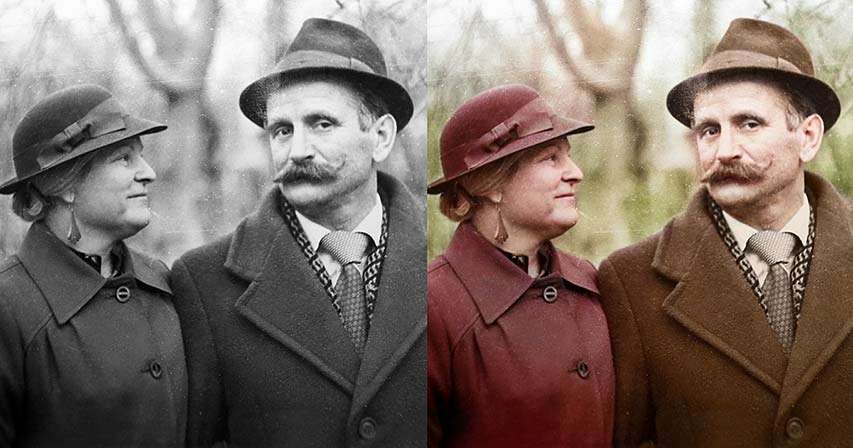Introduction: How Do I Get a Dark Background?
Dark backgrounds have emerged as a captivating trend in the realm of current visual communications, finding use in a myriad of areas from website designs to photography. This compelling aesthetic, characterized by its mystery and intrigue, may seem tough to achieve, but with the right steps, it becomes accessible. So, if you’re interested in milking this enchanting trend to your benefit, be sure to follow along on this journey of learning how to create a mesmerizing dark background.
Article of Outline
How Do I Get a Dark Background?
- Understanding the Importance of Dark Backgrounds
- Impact on Aesthetics
- Effect on Viewer’s Attention
- Steps to Achieve a Dark Background
- Selecting the Right Subject
- Employing Appropriate Lighting Techniques
- Utilizing Editing Techniques
- Tools to Help Achieve a Dark Background
- The Role of Photoshop
- The Magic of Mobile Apps
- A Look at ZMO.AI’s Background Changer
- Advanced Techniques for Dark Backgrounds
- Conclusion
- FAQ
Understanding the Importance of Dark Backgrounds
Impact on Aesthetics
The use of dark backgrounds extends a distinct element of intrigue and allure to photographs, wrapping them in an ambiance that is both polished and profoundly powerful. The presence of this deeper palette complements existing elements of the image, kindling a sense of focus on the subject depicted. It’s as if the key visual elements are ‘jumping’ out from the swathes of darkness that form the backdrop, captivating the viewer’s attention instantly.
This intricate dance of light and shadow creates an interesting dynamic, where the subject of the piece, be it a person or an object, becomes the star of the show. Against the vast and seemingly endless ocean of darkness, the salient features of the subject are outlined and emphasized in the painting, thereby increasing the overall visual impact.
It’s absolutely fascinating, almost awe-inspiring, how a simple strategy of incorporating dark backgrounds can breathe life into your creative vision, adding a whole new dimension to it. The depth that these inky backdrops impart is resoundingly captivating, drawing the viewers into the frame and urging them to explore the minute details of the composition.
On incorporating dark backgrounds, there is a palpable sense of creating a drama within the frame – a theatrical effect, one might say. The combination of light play on surfaces placed against the robust backdrop creates a contrasting aesthetic, defining a narrative fraught with intensity and interest. Your artistic compositions now don a cloak of intrigue, an air of mystery that is hard to look beyond yet impossible to not gaze into. Isn’t it simply remarkable how this strategy nourishes your creativity, adding richness and character to your creations? Yes, it indeed is a testament to the power of thoughtful composition and its ability to transform the visual narrative in extraordinary ways.

Effect on Viewer’s Attention
Dark backgrounds have an intensely compelling characteristic: they create a captivating contrast to virtually any subject placed against them. This arresting juxtaposition plays a crucial role in shaping how a viewer perceives the presented motif, as it channels the viewer’s eyes directly and rather unswervingly to the item of primary importance.
With their inherent deep and intense tones, these dark backgrounds operate as an effective buffer zone against superfluous elements that may vie for a viewer’s attention, hence performing as an excellent method for eliminating possible distractions. This ensures that the attention is not siphoned off or dispersed, instead, everything is directed, zeroed in, and anchored to the main theme or point of concern. It forms a clear pathway for one’s gaze, paving the way for an unobstructed, central emphasis on what truly matters: the chosen subject at hand.
Have you ever had the opportunity to observe something as exquisite as a jewel, something that glistens and glimmers with an unparalleled brilliance, when it’s placed against the backdrop of a dark, velvety cloth? When this happens, it seems as if the jewel’s radiance is amplified, shimmering with a heightened intensity and capturing the essence of its brilliance more profoundly. This is not a mere coincidence; there’s a palpable principle at work here.
Similarly, any subject against a dark background can acquire this luminosity, this augmented level of interest. It is the direct application of the same principle used in the jewel and velvet cloth example, demonstrating just how impactful the choice of a dark and contrasting background can be in driving attention and focus – a lesson worth heeding for anyone seeking to highlight an item in the most visually effective way possible.
Steps to Achieve a Dark Background
Selecting the Right Subject
Choosing a light or brightly colored subject will provide a greater contrast when placed against a dark background. The contrast, in reality, is indeed like the night and day difference!
Employing Appropriate Lighting Techniques
Experimenting with the lighting can significantly influence whether your background appears dark. Low-key lighting is ideal, where strong light is focused on the subject with little to none on the background.
Utilizing Editing Techniques
Believe it or not, a dark background can be achieved with just a few clicks. Tools like Photoshop and Lightroom can darken the background of your photo digitally, further proof that you don’t need to shy away from the venture of obtaining dark backgrounds even if you’re not a professional photographer.

The Role of Photoshop
In Adobe Photoshop, you can create dark backgrounds using the ‘Brush’ tool to paint the background black or adjust the image’s brightness and contrast.
The Magic of Mobile Apps
Various mobile applications, such as Snapseed and Adobe Lightroom Mobile, make it easy to darken backgrounds. However, none compare to the simplicity and user-friendly approach offered by ZMO.AI‘s Background Changer.
A Look at ZMO.AI’s Background Changer
Whether you’re a guy next door editing a personal picture or a professional requiring fast edits, ZMO.AI‘s Background Changer will save your day. With a couple of clicks, you can flawlessly change your image’s exposure, highlighting the subject while darkening the background. And yes, it’s as cool as it sounds!

Advanced Techniques for Dark Backgrounds
Diving deeper into the realm of the dark can be a captivating journey, and mastering studio lighting techniques is an essential step for any budding artist. These methods allow you to manipulate and control how light, or lack thereof, plays on your subjects. With the right composition and nuanced use of shadows, you can evoke a plethora of emotions, set different atmospheres and bring depth to your creations. More importantly, becoming proficient with lighting techniques will refine the contrast and brightness in your imagery, setting the stage for powerful, aesthetically appealing shots.
Simultaneously, understanding post-processing techniques is a requisite in the digital age. Post-processing—or the art of editing your images after they’ve been shot—allows you to further enhance and alter your work’s visual aspects. From adjusting saturation levels to introduce more vibrant hues or mute them, to tweaking sharpness for clarity or intentionally creating a blur, post-processing stands as your gateway to a boundless world of artistic potential.
Integrating both studio lighting and post-processing techniques into your toolkit enables you to explore and express your creativity more thoroughly. This dual-method approach can bring forward the hidden artist within yourself as you learn to master the balance between initial capture and post-production, honing your skills across the whole spectrum of photography. As you start to recognize your unique style and preference, this knowledge base can be a stepping stone, leading you deeper into the enthralling realm of dark imagery.
Conclusion
In conclusion, delving into the world of dark imagery requires a solid grasp of studio lighting techniques and post-processing methods. Both elements provide the means to shape and enhance photos, allowing you to control the narratives within your shots effectively. Mastering these practices unveils the hidden artist within you, unlocking a higher tier of your creative potential. As you grow comfortable with these tools and begin to develop your unique style, you will only plunge deeper into the alluring realm of dark photography. This continuous learning process, filled with both challenges and exciting discoveries, ultimately molds you into a more sophisticated artist, capable of creating compelling and visually stunning works of art.
1. Can I achieve a dark background outdoors?
Absolutely! While the studio gives you more control, playing with natural light, shadows, and editing can also produce stunning dark backgrounds outdoors.
2. What subjects work best for dark backgrounds?
Subjects that are brightly colored or light tend to pop against dark backgrounds. These may include flowers, brightly colored objects, or light-colored clothing.
3. Is using an app to darken the background considered ‘cheating’?
Not at all! Photography is an art, and there’s no right or wrong in art. If an app helps you achieve the desired result, go for it!
4. Is ZMO.AI’s Background Changer free to use?
Yes, it provides basic features for free and has premium features for a small subscription.
5. Can I undo changes on ZMO.AI once made?
Yes, the application allows for easy undo and redo operations, giving you the freedom to experiment without fear of permanent changes.
 Moridom Digital Agency Agency for Everything Digital
Moridom Digital Agency Agency for Everything Digital




